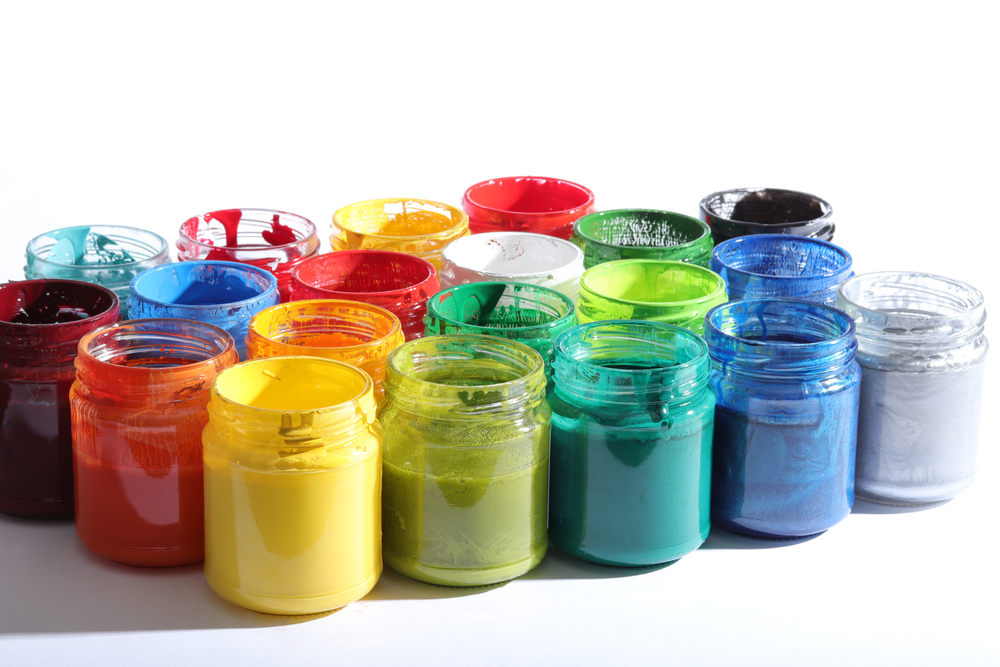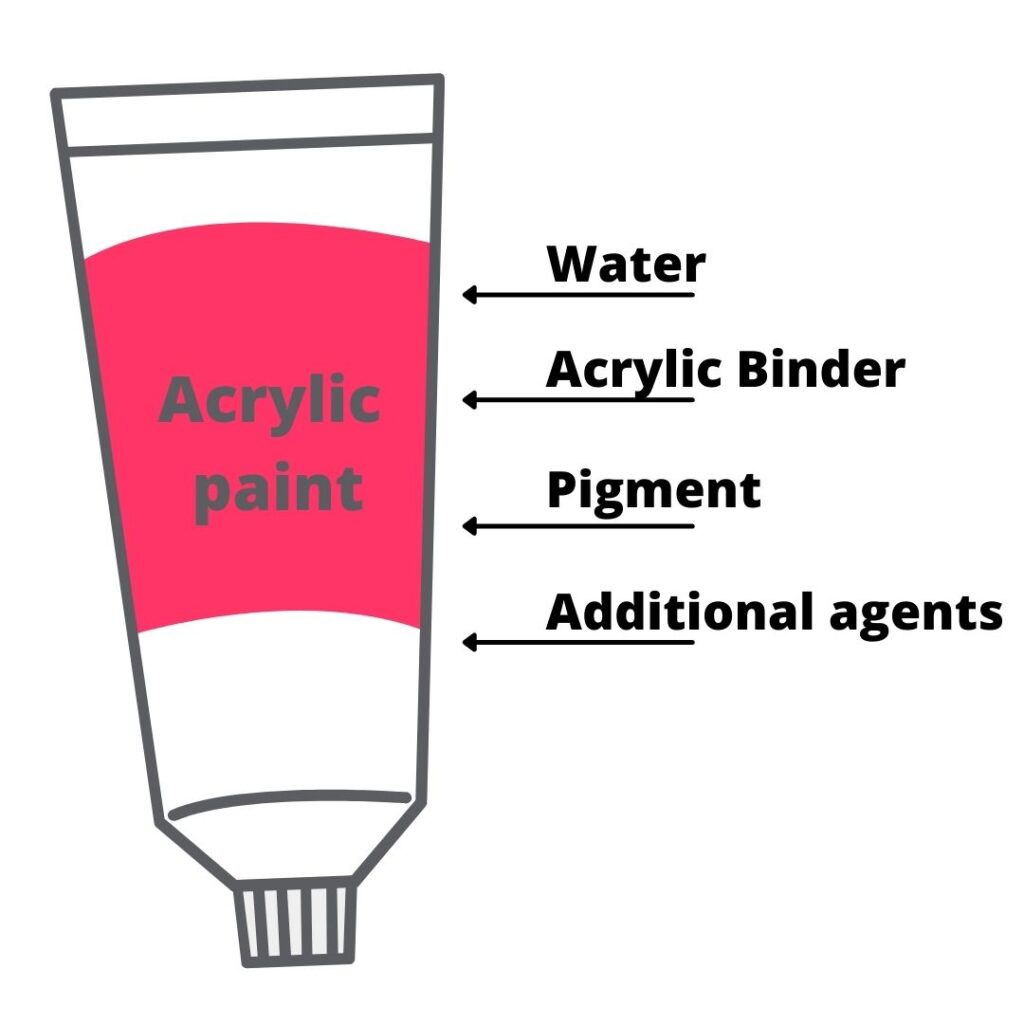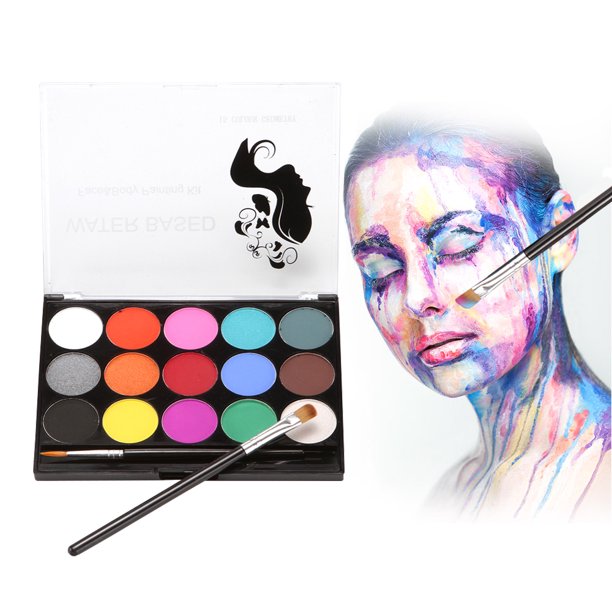Can acrylic paint be used on the skin
What is Acrylic Paint?
Acrylic paint was invented in Germany in 1934, utilising water, acrylic resin, and pigment particles. The creation of a paint that combined the qualities of oil and watercolour paints and could be diluted with water was a game-changer. Initially marketed as house paint, by the mid-1950s, artists were experimenting with it as a possible replacement for oil paintings and other mediums.

Types of Acrylic Paint
Oil-based paint has been the most often used media in art history. In comparison to other mediums, oil paints are more hazardous to use, and as a result, more solvent-based cleaning products are needed. Because of the ease with which it can be cleaned and is less dangerous, it rapidly became the preferred medium.
A wide variety of acrylic paints may provide effects and processes comparable to those of oils. Acrylic paints can be classified as follows:
-
Acrylic Inks
With a water-like viscosity, acrylic emulsion suspends the pigment in a finely ground powder that may be applied to any surface. Brushes, pens, and airbrushes can all be used to apply the paint. The ink has vibrant colours and a high gloss finish.
-
Acrylic Spray Paints
In addition to covering huge areas with thin layers of paint, spray paint allows you to manage exactly how much of the colour you apply, whether it’s a lot or just a few lines. Other acrylic paints can also be used with acrylic spray paints.
-
Soft Body Acrylic Paints
This type of paint has a smoother texture and a somewhat thinner consistency, like yoghurt than the heavier-bodied paints. Various mediums such as texturing gels, flow improvers, and retarding media can be used with these for a smooth application.
-
Heavy Body Acrylic Paints
Popular with painters, this is the thickest, heaviest, and heaviest of acrylics. Like oil paint, this paint has a buttery texture and preserves brush strokes. It can also be used on rough canvas.
-
Fluid Acrylics
The viscosity of fluid paints is similar to double cream and comes in a bottle rather than a tube. This type of paint may be used with an airbrush and sprayed directly into a piece of art or a surface you are working on for finely detailed painting, glazing and staining.
-
Acrylic Gouache
Acrylic gouache is a common choice for illustrators who wish to lay down a vast area of flat colour. The gouache dries to a velvety matte appearance when the brush strokes are even out as it dries.
Numerous grades of acrylic paint are available to differentiate between the end-of-line children’s colours, student-grade goods, and artist-grade colours. There is many pigment density and quality variation between these paint grades. Inevitably, the most outstanding quality and bright colours can be found in professional artist-grade alternatives, but they are also more costly.

In addition to canvas and paper, acrylics may be used to paint on clay, textiles, wood, and other media. Some people may be questioning if painting the face or any other area of the body with acrylics is on this list of acceptable surfaces.
Is Acrylic Paint Safe for Skin?
Whether you’re a professional artist preparing a model for the catwalk or a parent planning a child’s birthday party and need ideas for face painting, it’s critical to research before applying any paint to the skin, the body’s biggest organ. This is why it’s so important to do your homework and study the product labels from the makers before you buy anything.
Whether acrylic paint is safe for the skin is a common question. Even if acrylic paints are labelled as “non-toxic and water-based,” this does not always indicate that you may apply acrylic paint on your skin or face. Considerably better options, such as paints and other items designed specifically for this purpose, are available. Although labelled non-toxic, acrylic paint still contains certain chemicals that might cause skin irritation or other issues.
Ingredients in Acrylic Paint
An acrylic polymer emulsion with a mixture of colour pigments is used to generate acrylic paint. The acrylic polymer allows the paint to dry hard but stay water-soluble while it is still wet. Acrylic paint is made from a variety of different materials.
Initiators initiate polymerisation, pH balance buffers, preservatives, defoamers, and thickening agents, which are just a few of the components present inside acrylic paint. Ammonia, lead, and formaldehyde can be found in acrylic paints, as can formaldehyde.
To buy the least dangerous paint, you should read the labels to ensure you’re getting lead-free paint. “Is acrylic paint safe for skin?” is now a question we can all finally answer! If so, which ones would you like to use? While the actual pigments used in acrylic paint are not harmful, certain brands still include hazardous compounds and lead-based pigments, which can harm your health. Any paints with these components should have warning labels, but only if purchased from a reputable source.

Is Acrylic Paint Safe on your delicate Skin?
No, acrylic paints are not suitable for use on the skin since they contain no pharmaceutical-grade chemicals. Even skin-safe paints should be rinsed off as quickly as possible, even if they are expressly formulated for that purpose.
There are several advantages to using acrylic paint on canvas, but there is no need to apply it to your skin or face. Using acrylic paint on your skin has several drawbacks, some of which are listed here:
- Cracking of the paint: Because the body is not stiff, it will begin to break when it dries if applied to the skin.
- Toxic and Hazardous: Many of the components in the paint are not safe to inhale or apply to the skin, even though they are not harmful in general.
- Difficult to remove: To remove acrylic paint that has dried to a stiff consistency on your skin, use warm soapy water or rubbing alcohol. Peeling the paint off might be unpleasant.
- Very hard after drying: Acrylic paint, which hardens after drying, might be called plastic. While this is good for painting on walls or canvas, it is not recommended for use on the skin.
Can you put Acrylic Paint on your face?
Our face skin is delicate, and applying acrylic paint on it is not advised. Many people disregard the warnings and continue to use these paints on their faces without experiencing any detrimental effects. It’s important to remember that even if your skin doesn’t respond, the poisons are still being absorbed into your system. Keep in mind that the process of removing the paint will almost certainly be as complex.
Face paint should be used instead of a moisturiser if you want to keep your skin safe from the hazardous effects of acrylics, yet some individuals do this nevertheless. Removing these paints with warm water is more straightforward, as they are non-toxic and non-hazardous.

Bodypaint is also accessible if you need to paint other portions of your body and has been around for a long time, primarily for special events and stage appearances. When cured, face and body paint will not crack. To be safe, don’t let your kids use finger paint to apply acrylic paint.
Even if you can’t help it, wash your hands immediately if you get acrylic paint on them. Any amount of paint on your skin, no matter how small, might expose you to potentially harmful compounds, perhaps resulting in future health issues. The use of acrylic paint by children under three is strongly discouraged, as is painting by older children without adult supervision. Know more about acrylic paint usage on your face in this detailed post we have written.
Which paints can be used on the skin?
Most of the time, you won’t have a problem getting a little acrylic paint on your skin, but for some people, even a tiny amount of paint can cause severe reactions. To avoid skin sensitivities, you should usually apply specialized cosmetic paints to your skin.
If you are allergic or have sensitive skin, it is advised to avoid all paint unless you have had a skin test done first. If your skin has an adverse reaction, you should be able to tell within a few minutes.

Those who use it regularly know it’s not cheap when it comes to professional-grade body paint. Alcohol-based, latex, henna, and metallic paints are a few options. Less expensive body paints may not be as vivid or long-lasting as those more expensive. When choosing paint for use on the skin, remember a few things.
How to Remove Acrylic Paint?
Because acrylic paints are water-resistant, you don’t need much more than soap and water to remove them from your hands. For wet paint, flowing tap water should be enough; for dried paint, you may need more than water to remove it. If you let the paint dry, it will constrict your pores and irritate your skin even more. You should wash acrylic paint off as quickly as possible, but if you can’t access a tap and the paint has been set, several methods can assist you in removing it.

However, if the paint has been spilt on hairy areas of your body, you may wind up with painful, irritated skin if you try to scrape it off.
- Put some butter or margarine on your toast.
- Help loosen the paint by applying baby oil to the surface.
- A little mayonnaise goes a long way.
- Vaseline or another petroleum jelly
- Nail polish remover which do not possess acetone
- Disinfectant.
- Vegetable oil can be used if baby oil is unavailable.
Tips for using Acrylic Paint
You can use so many techniques with acrylic paint that you don’t want to worry about the paint causing health issues for yourself or others, especially if you have youngsters in the house.
- Check all the labels on your paint product to learn more about what it is made of and used for.
- Avoid getting paint in your eyes, nose, or mouth.
- Clean up any skin stains as soon as they occur.
- Make sure you’re painting in a well-ventilated environment.
- Before painting, always perform a skin test on a tiny area of skin to determine whether it causes any reactions.
- It’s best to keep your paints out of the reach of youngsters and pets.
Conclusion
To summarise, applying acrylic paint directly to the skin is not only not recommended, but it also runs the risk of causing irritations owing to the toxic chemicals frequently present in the components of acrylic paint. Acrylics should never be used on the skin; instead, you should use specifically formulated paint on the face, body, and nails.
FAQ
- Is Acrylic Face Painting Safe?
You should not apply any paint on your face or skin unless designed for that purpose. As a result, acrylic paints are not recommended for use on the skin due to the high concentrations of lead and formaldehyde found in many of them. Once acrylic paint has been set and solidified, it can be difficult to remove.
- Is acrylic paint toxic or hazardous?
Acrylic paint, when used as intended, is not really hazardous but may damage your health when applied to your skin or when breathed. For this reason, the answer is “yes” and “no.” Always wear a mask, eye protection, and gloves if you paint with acrylic spray. Children should not use acrylic paint as finger paints, either.
- What is the odour of acrylic paint?
For the most part, acrylic paints emit very little or no smell. A tube of acrylic paint with a strong odour should be returned to the retailer or replaced for your painting. Ammonia is an ingredient in several acrylic paints, and many people are sensitive to it. If you’re painting in a tiny, stuffy room, you risk being nauseated, irritated your eyes, headaches, and having trouble breathing.
- Is Acrylic Skin Paint Washable?
After a shower, acrylic paint should come off the skin. This paint dries quickly, so you need to act soon! Removing acrylic paint is progressively challenging once it has completely set and hardened. Using rubbing alcohol or a scrub brush to remove dried-on acrylic paint could help you avoid getting it all over your clothes.

Being associated with art and craft field since decades as a hobbyist and life long learner has given me an opportunity to learn many new things related to art, craft, paints and pottery which i am trying to share with your guys on this website. I have expertise of being professional painter and potter for the last 20+ years
I have learned mind blowing cool tips and insights which makes me a person with ability to improvise and come up with creative ideas and solutions to make stunning and impeccable art pieces of all types which are adored by people across the globe on this website and other platform.


